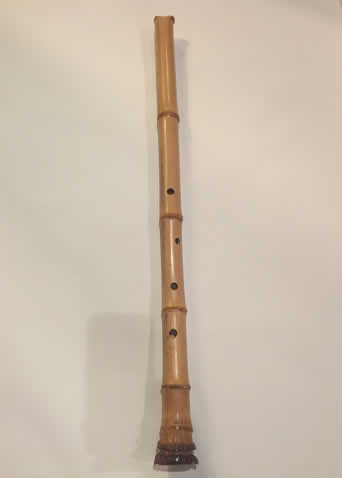The Approach
Jinashi Shakuhachi making requires an approach that leaves the interior of the instrument as natural as possible, while still working the resonance points in order to have the instrument play as soundly as possible, with maximum fluidity. Jinashi Shakuhachi are in a natural state, and do not have the filler used in precision bore Jiari Shakuhachi. A Jinashi Shakuhachi provides more control over tonal quality and other acoustical aspects of the sound produced. Jinashi Shakuhachi have a more natural sound because they have a unique timbre or tone color that some feel reflects the true spirit of bamboo and mood of Shakuhachi. The tone of jinashi is somewhat darker and more mellow than the brighter sound of the Jiari precision bore flutes. When made properly, as Shawn does, these flutes exhibit a very open and remarkably resonant envelope of sound. Shawn’s approach to Jinashi Shakuhachi making is to remove material in order to finely and precisely tune the Shakuhachi. If necessary material is added, such as epoxy mixed with bamboo dust in order to create pressure point areas that enhance the responsiveness and clarity of sound, while still maintaining the natural earthy tone of a Jinashi Shakuhachi, and the integrity of the Shakuhachi. When making Jinashi Shakuhachi, Shawn imagines the Komoso Shakuhachi player, and is reminded of the importance of not overdoing the tuning by adding too much material. Shawn imagines the Komoso and adjusts his ear to the tone colors of the meditation Shakuhachi.



